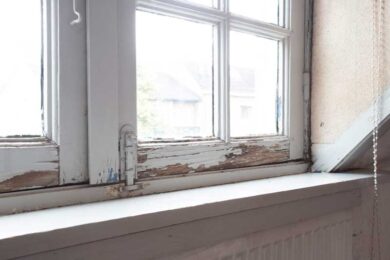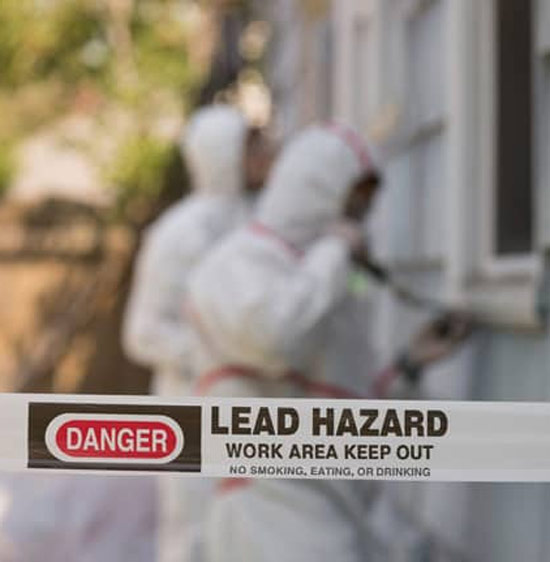Reputable DOH & HPD Lead Violation Removal in NYC-- Protect Your Residential property
Crucial Devices and Approaches for Efficient Lead Violation Cleanup
Attending to lead violations effectively necessitates a comprehensive approach that mixes the right tools with tactical methods. Simultaneously, the use of specialized clean-up devices, such as HEPA vacuum cleaners and lead-specific cleaning agents, is critical for thorough impurity elimination. Effective control methods, consisting of plastic bed linen and adverse air pressure systems, are essential to stop the spread of harmful products.
Individual Protective Devices
Personal protective equipment (PPE) is a critical element in the efficient management of lead contamination cleanup. PPE offers as an essential barrier, safeguarding employees from the hazardous results of lead exposure, which can cause extreme health and wellness repercussions. The vital PPE for lead cleanup includes respirators, safety apparel, gloves, and eye protection. Each kind of tools is specifically created to minimize various threats linked with lead fragments and dust.
Respirators, especially those furnished with HEPA filters, are vital for filtering airborne lead fragments, stopping breathing. Appropriate fit and seal checks are vital to ensure their performance. Protective clothes, consisting of coveralls and disposable suits, protects against lead dirt from adhering to workers' garments, lowering the danger of additional contamination. Handwear covers, commonly made of nitrile or latex, secure the skin from direct contact with lead, while safety goggles or full-face guards secure the eyes from dust and debris.
Furthermore, rigorous training on the proper use and upkeep of PPE is important. Workers should be informed on donning and doffing procedures to prevent contamination. Regular examinations and substitutes of PPE components are needed to keep their safety abilities, guaranteeing a secure and compliant cleanup operation.
Specialized Cleaning Equipment

An additional important device is the wet/dry vacuum, which can properly cleanse up both dust and fluid pollutants. These vacuums often include HEPA filters to supply an additional layer of safety. Damp wipes or tack fabrics are additionally vital for surface area cleaning; they are specifically developed to record and hold lead particles, lowering the risk of spreading contamination.
For more persistent down payments, specialized lead-removal cleaner are called for. These agents are created to break down lead bits, making them simpler to eliminate. Scrub brushes with tough bristles can assist in this process, especially on rough surfaces where lead dirt tends to adhere much more highly.
Additionally, encapsulants are used to secure lead-contaminated surface areas, preventing the launch of lead dust. These specialized paints and coatings are designed to stick to numerous substratums, providing a long-lasting solution for lead control.
Effective Containment Techniques
Reliable control methods are essential in minimizing the spread of lead contamination throughout cleaning activities. Executing durable control techniques makes certain that lead visit the site fragments do not migrate to unaffected areas, therefore protecting both employees and the setting. One primary approach is the use of plastic bed visit the site linen to seal off polluted areas. Sturdy polyethylene obstacles can be installed from flooring to ceiling to create a controlled job area, dramatically lowering the risk of air-borne lead dust dispersal.

To improve containment, encapsulants can be put on surface areas that are not being gotten rid of or disrupted. These specialized coatings bind lead dust, reducing its accessibility for resuspension. In addition, all personnel should use appropriate Individual Safety Equipment (PPE), consisting of respirators and non reusable matches, to stop contamination spread.
Safe Disposal Practices
Making sure safe disposal methods is an important element in the go to my blog management of lead contamination clean-up. Proper disposal alleviates the danger of lead re-entering the atmosphere and jeopardizing public health. The primary step is to identify and set apart lead-contaminated waste from other materials. Safe control using heavy-duty, watertight containers is necessary to stop splilling during transport.
Moving lead waste requires adherence to stringent standards. Utilizing accredited hazardous waste providers guarantees that the materials are managed sensibly. Paperwork, including materializes detailing the type and amount of waste, should accompany shipments to track the waste from the site of beginning to its final disposal location.
Designated harmful waste disposal centers are geared up to deal with lead-contaminated products securely. These facilities often use advanced techniques such as stablizing, solidification, or chemical therapy to neutralize the lead before disposal. Landfilling in specialized, lined locations that stop leachate from contaminating groundwater is an usual technique for final disposal.
Routine training for workers associated with lead waste disposal is crucial to maintain safety criteria and avoid unintended direct exposure. By sticking to these methods, organizations can significantly minimize the environmental and wellness influences related to lead contamination.
Regulatory Compliance Tips

Complying with regulative compliance is critical in the successful execution of lead contamination cleaning. Recognizing and complying with federal, state, and local regulations makes certain not only the security and health and wellness of people but also the legal and financial health of the cleanup company. The Epa (EPA) sets stringent criteria, such as the Lead Improvement, Repair Work, and Paint (RRP) Regulation, which mandates appropriate certification and training for service providers managing lead-based tasks.
Compliance begins with a comprehensive evaluation of applicable legislations and laws. Organizations must stay updated on any type of legal adjustments, which can be promoted through regular training sessions and subscribing to industry updates. Documents is an additional critical conformity element; keeping comprehensive documents of all tasks, consisting of inspection reports, staff member training logs, and disposal shows up, is essential.
Moreover, involving with accredited lead inspectors or risk assessors guarantees that lead hazards are correctly determined and mitigated. Employers have to apply using Individual Protective Devices (PPE) and guarantee that safety protocols are strictly adhered to. Clear interaction with stakeholders, consisting of staff members, clients, and regulative bodies, will certainly foster a society of compliance and liability, eventually contributing to a more secure and extra efficient lead cleaning process.
Conclusion
Efficient lead violation cleaning necessitates the combination of specialized devices and critical methods to make sure safety and effectiveness. Individual protective devices (PPE) safeguards workers from exposure, while secure disposal techniques and stringent adherence to regulatory conformity are vital for responsibly taking care of unsafe waste.